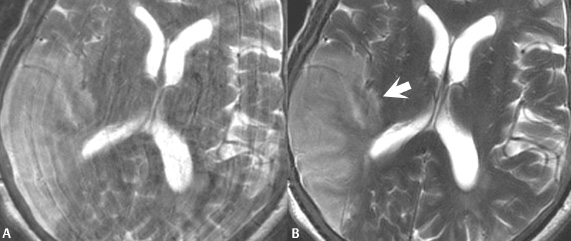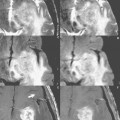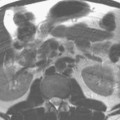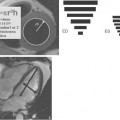31 BLADE (PROPELLER)

Fig. 31.1
Despite reduced scan times, motion artifacts may still substantially degrade clinical scans. BLADE (PROPELLER) represents an innovative approach to reduce motion artifacts. k space is sampled by multiple echo trains in a rotating, partially overlapping fashion (like the rotation of a propeller), rather than in the standard rectilinear fashion. The benefits in terms of diminished motion artifacts are due principally to the k-space trajectory, which is substantially more robust in terms of ghosting, and secondarily to correction for in-plane rotation and translational motion.
BLADE was first demonstrated in T2-weighted fast spin echo (FSE) imaging and subsequently extended to FLAIR. Figure 31.1 illustrates heavily T2-weighted scans in a patient with a large acute middle cerebral artery infarct (arrow, B) acquired with (A) conventional and (B
Stay updated, free articles. Join our Telegram channel

Full access? Get Clinical Tree








